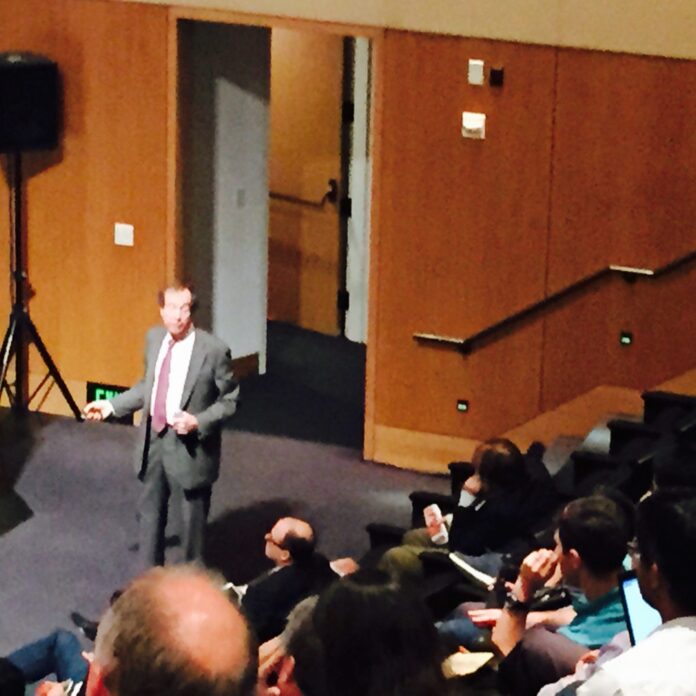Texas Wireless Summit attendees hear massive MIMO essentials and benefits
AUSTIN, Texas – Service providers last year spent $41.3 billion on U.S. spectrum. Full realization of massive multiple-input/multiple-output antenna technology could hugely increase the utility of those costly spectral assets by a factor of 50.
IEEE Fellow Tom Marzetta, group leader of large-scale antenna systems at Alcatel-Lucent Bell Labs and co-head of the FutureX Massive MIMO Project, explored that possibility during the afternoon keynote at the Texas Wireless Summit hosted by the University of Texas-Austin Wireless Networking and Communications Group on Oct. 16.
The promise of getting more benefit out of the spectrum with massive MIMO is one of the reasons service providers spent so much at the Federal Communications Commission auction, Marzetta said.
“The other possibility is they were absolutely desperate to get some of the very last, most useful spectrum that will ever exist,” Marzetta said. “A few years from now … once massive MIMO is practice, they’re going to be extremely pleased that their initial investment essentially appreciated by a factor of 50.”
Put in simplistic terms, massive MIMO means the more antennas transmitters and receivers have, the more possible transmission paths, which equates to better data rates and reliability.
Marzetta drew a reaction from the room when he proclaimed: “You don’t need small cells if you have massive MIMO. They’re useless.”
He boiled massive MIMO down to “spatial multiplexing pushed to an extreme.”
Essential components include many physically small, low power antennas, aggressive spatial multiplexing and utilization of measured channels. Benefits of massive MIMO, Marzetta said, are scalability, spectral efficiency, simplicity, great service to all users and energy efficiency.
“This is this critical point: You must use measured propagation. It’s a scalable sort of system,” Marzetta explained. “You don’t have to have the differing antenna elements phase coherent. You don’t even have to know where they are. It’s very nice.”
View Marzetta’s entire presentation here:
View all of the Texas Wireless Summit panels, keynotes and presentations on the RCR Wireless News YouTube channel.

